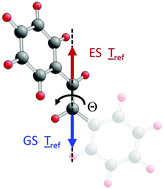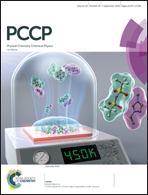Fragment motion in motor molecules: basic concepts and application to intra-molecular rotations
Abstract
The complex motion of atoms inside large molecules can be analyzed by considering translation, rotation, and flexibility of corresponding molecular fragments and by applying classical mechanics based on Pulay forces on the atoms, as in molecular dynamics. We propose a fragment motion analysis that provides a basic qualitative understanding of the motion of the different molecular components. Further, it can help to describe or design simplified fragment motions, e.g. the rotation of a rotator with respect to its stator counterpart in a rotor molecule, despite the higher actual complexity due to flexibility of rotator and stator or due to a variable rotation axis. The formal aspects of the fragment motion analysis are discussed in detail. Its application is illustrated by the rotational motion inside the BTP-BCO molecule and by rotational transitions between cis- and trans-stilbene isomers.



 Please wait while we load your content...
Please wait while we load your content...